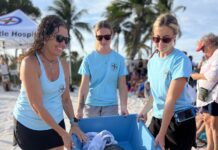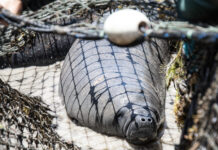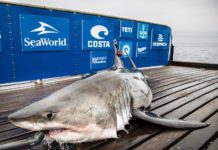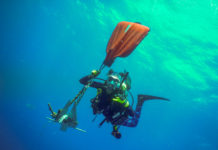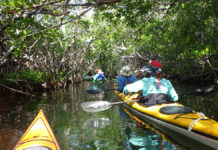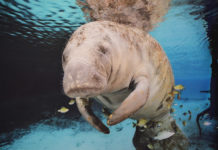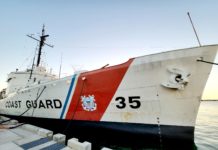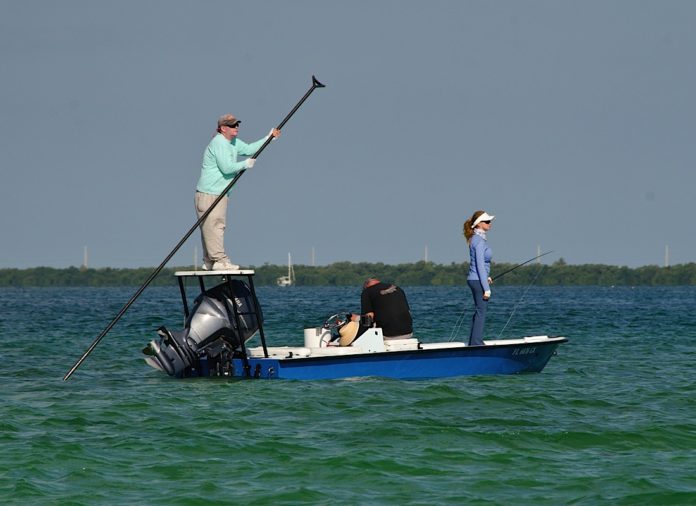
The tarpon are here in full force. After weeks of fits and starts, the silver kings finally moved into the bridges in big numbers and began swimming the Oceanside in mid-April. In fact, April 15 was a bittersweet day for me: after filing a painful tax return, I salved my wounds by catching my first Atlantic side tarpon this year. Most of the initial action was farther east toward the Channel 5 and Long Key Bridges. Now migrating tarpon can be found from Islamorada to Key West. Plus there are still plenty of fish in the Gulf and Florida Bay backcountry.
Pursuing the big migrants is exhilarating and frustrating. Watching herds of the fish swimming toward you buckles the knees and makes palms sweat. You have to remember to breathe when a poon eases up to scrutinize your fly and damp the frustration when the fish refuses to be fooled. And there’s a lot of frustration since the ocean cruisers have reproduction on their minds – not eating. But when it comes together, you witness the best bite in the fishing world and 60 to 150 pounds of hooked silver scaled fish crashing about leaving big foamy holes in the water.
Anglers and guides all have their favorite fly patterns in a variety of shapes and colors. Why tarpon will eat (sometimes) chartreuse, peach or purple flies remains unknown. If anyone has ever seen a purple mullet or crab, please let me know! More important than the pattern or color is the presentation. The fly needs to be in the tarpon’s face and swimming or twitching like a helpless creature trying not to be eaten – think of those nightmares where you cannot get away from the monster under your bed and impart that action to your fly.
For the next six to eight weeks, the Keys are the fly fishing center of the world as myriad anglers come to match wits, and muscles, with the mighty poon. As a result, boat traffic and competition creates the need for peaceful coexistence. Some problems arise from lack of knowledge by non-anglers. The tarpon cruise parallel to the Keys – swimming mostly east or west – along the edges of bars and flats and fishers and guides wait patiently on these edges to intercept the fish. So boats or watercraft running due east, or west, of the waiting fishers are likely running over and spooking the migrating tarpon. The fix is simple – just run a few hundred yards farther outside (south) of the waiting skiffs. This avoids the east-west tarpon “trails.” And give the anglers, and tarpon, some room. A Key Colony Beach resident was hooked up to a big tarpon when a boat motored in running over the line and cutting off the fish. When the clueless boaters asked, “How are they biting?” the response was less than pleasant.
Among anglers, courtesy is necessary. Cutting in “front” (to the east) of a staked out boat is dirty pool. Etiquette demands the second arrival to tuck in behind the first — preferably a couple of hundred yards or more away. If the situation requires you to get in front of another, do so as far in front as you can but rarely closer than 300 yards. Finally when you must come in relatively near a flats skiff, do so quietly by poling or using an electric trolling motor. A little understanding and courtesy allows everyone to amicably share our waters.
Despite the focus (my wife calls it obsession) on tarpon, high spring offers lots of other fish to be caught. Recent visiting friends wanted fish for dinner so it was off to some wrecks for snappers. Permit were spotted and Dan McNamara from Maryland pitched out a live crab which was grabbed immediately. Line scorched off the reel announcing a very big fish. Three or four times, the unseen fish was brought close only to peel off line in a desperate bid to get away. At the 15-minute mark, Dan’s tiring arms almost prompted him to hand off the rod. But he hung tough, worked the fish close, Capt. Jack Carlson readied the net, and soon an enormous 42-pound permit was dripping in the meshes. Dan, first mate JC Carlson, and the perm posed for a hero pic before the big spawner was released unharmed.


















